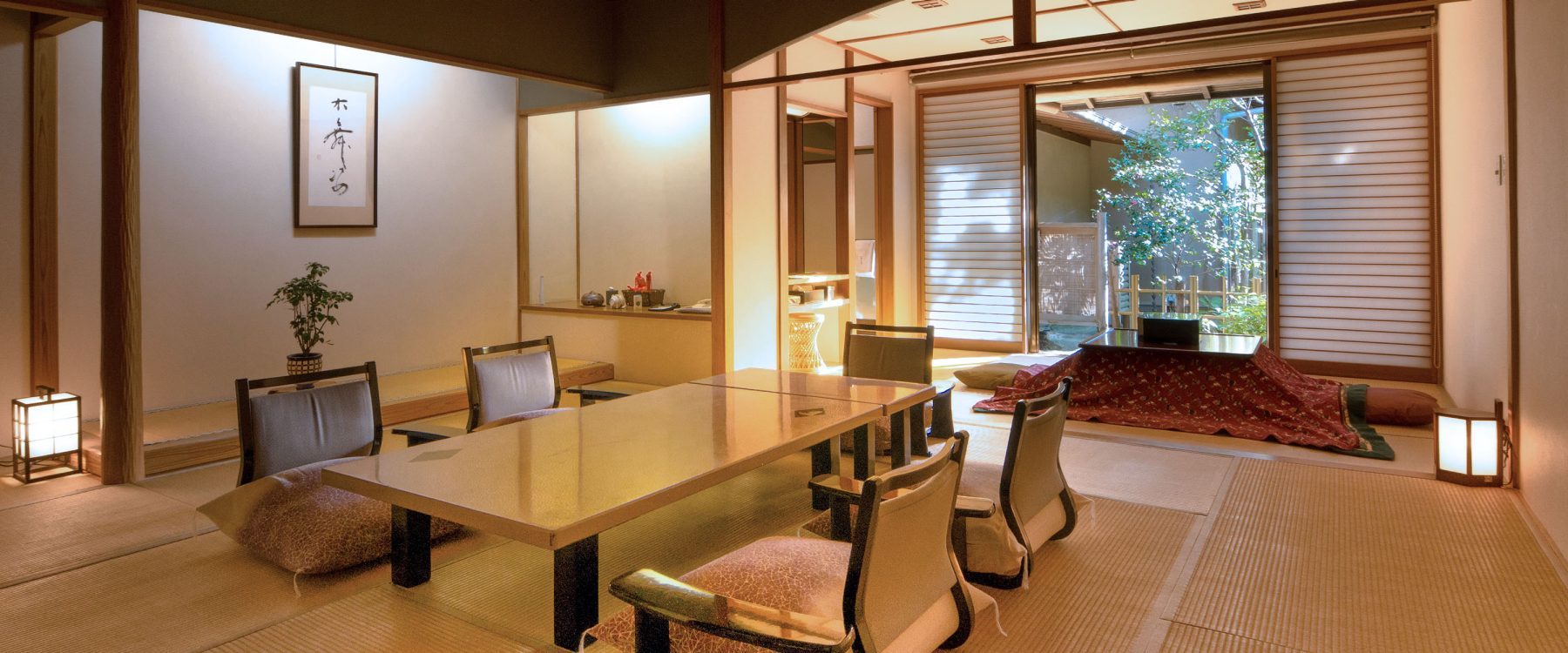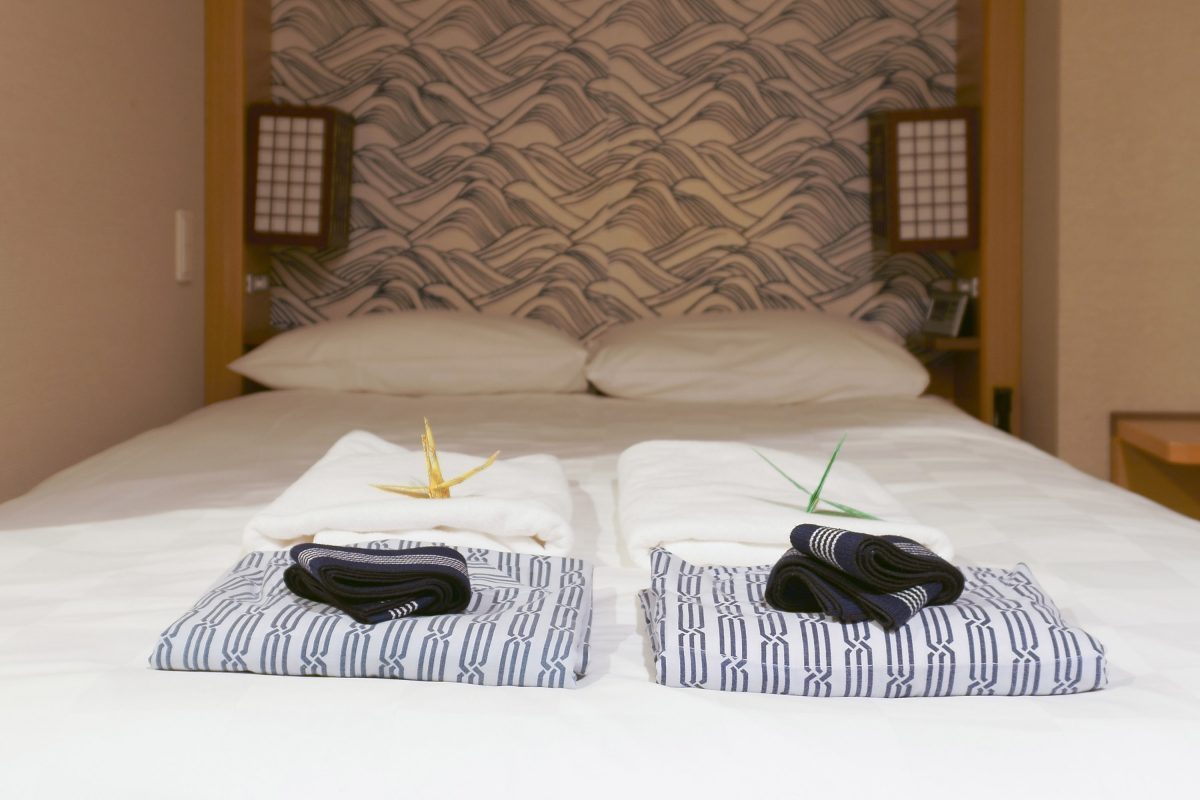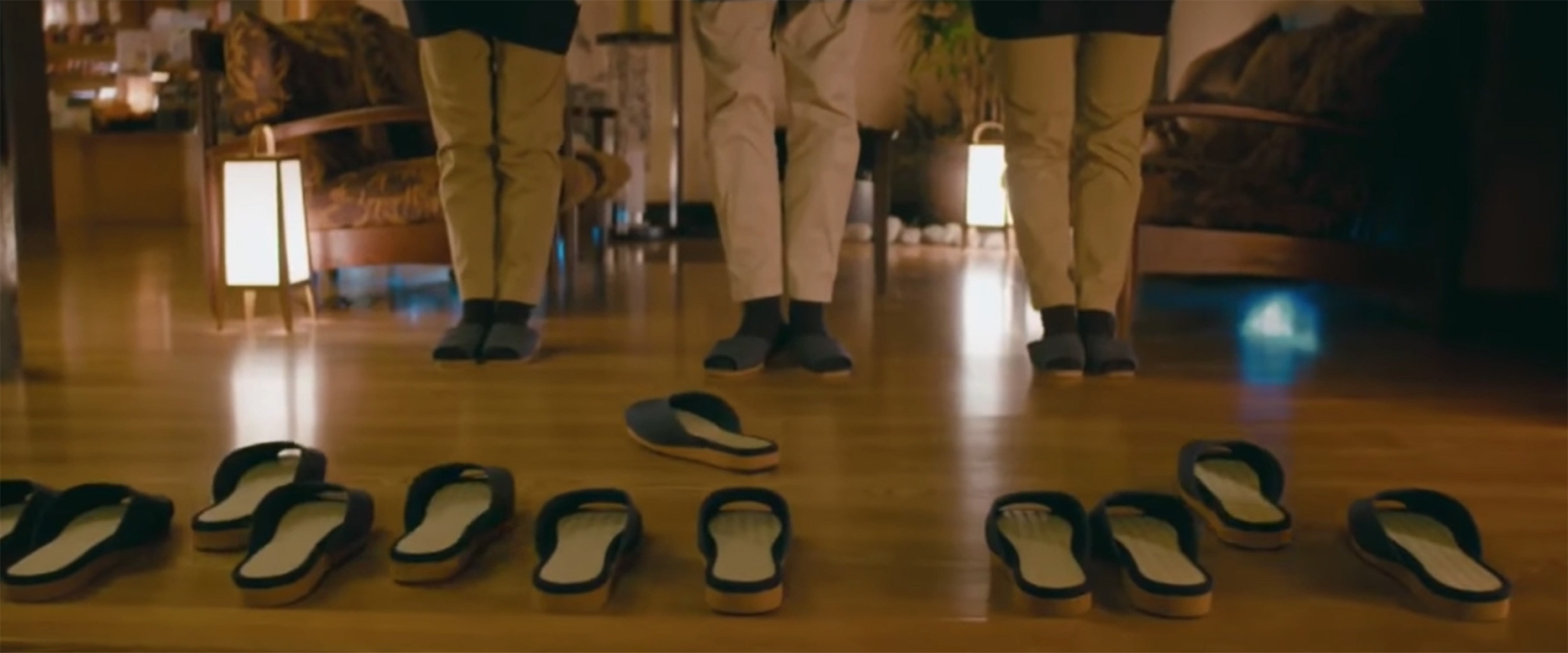THE SPIRIT OF OMOTENASHI
HOSPITALITY HONED OVER A THOUSAND YEARS

As far back as the 8th century, the traditional Japanese inn, or ryokan, offered respite
to weary travelers. Picture in your mind traders carrying their wares along the famed
Tokaido road that linked Kyoto to the capital city of Edo (modern day Tokyo). Later,
it was samurai traveling to meet their shogun. Along with getting a good night’s rest
and comforting food, travelers could also soak in an onsen, or hot spring, to ease
the aches and pains of such an arduous journey. Incredibly, over a thousand years later,
the same experience can still be had today. What makes such longevity possible?
One word:
omotenashi
.

WHAT IS OMOTENASHI?
A devotion to omotenashi, or bespoke hospitality, is at the heart of the ryokan experience.
But omotenashi is more than just providing a welcoming environment.
Omote means “public face,” an image you wish to present to outsiders.
Nashi means “nothing.” Together it means a selfless service that is pure, with an open heart.
It’s anticipating guests’ needs without any expectation of reward. To what extreme
can that be taken? In the days of the samurai, it meant designing the ryokan itself
with the specific needs of the guest in mind. Ryokan were built with low doors,
narrow stairwells, and small entrances to protect the guests from their sword-wielding enemies.
The tradition is said to come from a more peaceful place: the Japanese tea ceremony.
This can be traced back to Sen no Rikyu, the grandfather of the Japanese tea ceremony.
His artful way of entertaining included a multi-course meal and tea prepared right in
front of his guests. But the meal went beyond accommodating his guests’ physical hunger.
To satisfy aesthetic and intellectual needs, the mind as well as the body, the experience
included a thoughtfully curated poem, a seasonal flower arrangement, and always
engaging discussion. It was known as ichi-go ichi-e, “a once in a lifetime experience.”
...your every need and desire seems to be anticipated before you can even think to ask.

SERVICE THAT'S ALL ABOUT THE DETAILS
The essence of omotenashi still permeates the Japanese service industry today.
It’s seen in the water and hot towel that appear after being seated at a restaurant,
the bag holder on the ATM, and the staff members on the trains who bow to every
passing passenger. Even the way food is carefully prepared and artfully laid out
is inspired by omotenashi.
On that note, think of your experience in almost any sushi restaurant, anywhere in the world.
The chefs are placed in the kitchen facing the customers over a long counter.
They prepare the food in the open, nothing to hide, open hearted. They address each
customer individually. Clearly, the spirit of omotenashi has translated well into our modern,
daily lives, as well as across borders.

...your every need and desire seems to be anticipated before you can even think to ask.
A MODERN TWIST ON OMOTENASHI
Omotenashi in the 21st century expresses itself in a surprising variety of ways. Hoteliers are mixing modern amenities with qualities of simplicity, serenity, and extreme hospitality to offer a taste of the traditional ryokan.
The Radium Kagaya International hotel in Taiwan, for example, embraces many
traditional elements. Rooms have low tables and cushions, baths are fed by
hot springs. Most important, a butler service of attendants schooled in the
art of omotenashi are always waiting to deliver the highest levels of
Japanese hospitality. However, alongside these customary touches, come modern ones.
Think stellar views from the 16th floor, flat screens, and the latest craft cocktails.

Could it be that in our digital age omotenashi also has a high-tech expression?
A go-to for younger travelers, The Millennials Shibuya in Tokyo creates a bespoke
experience through an app. Nestled in their Smart Capsule, guests use a smart
device to personalise their stay. They can program their own wake-up so it all
happens seamlessly. The alarm hums, lights come on gradually, their favourite
morning show starts streaming – all as their bed gently lifts to an upright position.
Yes, it seems that even our technology takes inspiration from Japan's ancient
devotion to selfless service.
YOU MAY ALSO LIKE
EXPLORE THESE TOPICS




